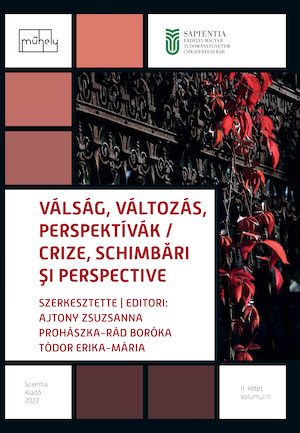A MAGYAR TÁRGY SZÓFAJA ÉS A HATÁROZOTT-HATÁROZATLAN RAGOZÁS
THE DIRECT OBJECT AND THE DEFINITE/INDEFINITE CONJUGATION IN HUNGARIAN
Author(s): Réka Pupp
Subject(s): Language acquisition
Published by: Scientia Kiadó
Keywords: direct object; definite conjugation; indefinite conjugation; third-person object;
Summary/Abstract: Each language has its own phonetic, morphological, and syntactic features, which now have to be taught online so that Romanian-speaking students can master and use them, preferably not just online. Teaching Hungarian as a foreign language exclusively online has often brought us into a crisis situation since in the absence of eye contact the realization of immediate feedback is lost, and there are far fewer opportunities for spontaneous linguistic expressions, for oral practice. One of the linguistic problems that arose during this period was the recognition and use of the definite/indefinite nature of the direct object, which is partly a matter of word type. The correct conjugation of the verb, which is in fact determined by the object itself, is particularly important here. In addition to the definite third-person object, for example, the basic member of a verb is always definite, but in the case of a first- or second-person or indefinite object, the verb also has an indefinite conjugation. A direct object expressed as a verb in the infinitive may offer a solution. Primarily because the form of the object expressed by a verb in the infinitive is simple, it is not difficult to recognize: akar aludni ‘want to sleep’, enged játszani ‘let play’, and in such cases the base verb has most often indefinite conjugation, which can be practised this way. Secondly, a direct object expressed by a verb in the infinitive can also have its own object expressed by a noun, and the conjugation of the base verb depends on the definiteness or indefiniteness of that second object: szeretnék fagyit enni ‘would like indefinite conj. to eat ice-cream’], szeretném a fagyit enni [would like definite conj. the ice-cream to eat]. The parallel practice of these syntactic structures (multiple objects) seems achievable with the help of written assignments.
Book: Válság, változás, perspektívák / Crize, Schimbări şi Perspective II.
- Page Range: 29-38
- Page Count: 10
- Publication Year: 2022
- Language: Hungarian
- Content File-PDF

